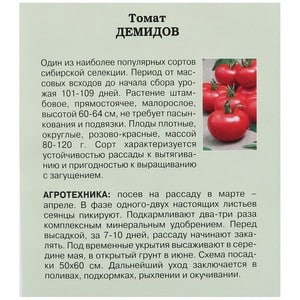The Demidov tomato, famous for its hardiness and loved by gardeners
The Demidov tomato variety is chosen for its hardiness. Recommended for cultivation in open and closed ground, it gives a good harvest in conditions unfavorable for many other tomatoes. With minimal care, Russian summer residents from all regions of the country receive a rich harvest of tasty, large and juicy fruits.
Description of the variety
Tomatoes were included in the State Register of the Russian Federation in 2001. Breeders from the Federal Scientific Center for Vegetable Growing from the city of Barnaul grew a new variety in 1998. At that time, tomatoes were a crop that brought high yields only in the southern zones. Residents of the northern part of the country were unable to grow tomatoes in their beds: even with the standard development of the bush, ovaries did not form on it. Therefore, the goal of breeders was to invent a variety that would bear fruit in short, cool and rainy summers.
The climatically unstable Volgo-Vyatka, West Siberian, East Siberian and Far Eastern regions became the regions for growing Demidov’s tomato. Summer residents of the Central Federal District also appreciated Barnaul tomatoes.
Distinctive features
Demidov - determinant standard (low-growing) variety. Height - 65 cm. Mid-ripening: fruits ripen 101–109 days after the appearance of the first shoots. The bush is medium leafy and produces few branches.
The leaves are potato-shaped, rich green in color, wide.This saves the inflorescences when humidity increases, for example, from dew, which often appears after sudden changes in night and day temperatures (difference of 7–11 °C). After 6-7 pairs of leaf blades, the first flowers form; after the raceme, they form after 1-2 leaves.
Tomatoes can easily tolerate sudden changes in weather conditions.
Fruit characteristics and yield
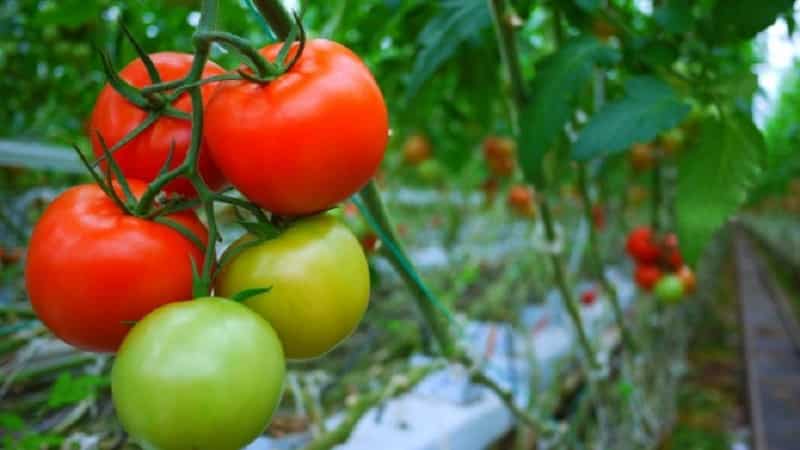
As can be seen in the photo, the fruits at the stage of biological maturity acquire a pink tint. Other properties of Barnaul tomato:
- round, slightly flattened shape;
- the skin is smooth;
- ribbing at the stalk;
- fleshy, tasty, sugar pulp;
- 4 seed chambers;
- weight - 80–120 g.
When carrying out the simplest agricultural work (regular and sufficient watering, fertilizing the soil), up to 9 kg of fruits are obtained from 1 m2.
How to grow seedlings
Demidovs are grown both with the help of seedlings and without them (the seeds are planted directly on the beds in May-June). In the first case, seed planting begins in 60–65 days.
Seed preparation
Agronomists recommend including 7 basic procedures in preparing seed material. When carrying them out, follow the sequence, but if any stage is uninteresting or seems difficult, just skip it and move on to the next one.
Start preparing a month before sowing:
- Calibration. Empty the seeds from the package and examine them. For planting, select large, even seeds. Set aside small, crooked, empty ones to the touch - you won’t be able to get a good harvest from them. Test the seeds with a salt solution: add a tablespoon of salt to a glass of water and place the grains there. After 20 minutes, discard those that float to the surface; they will not sprout.
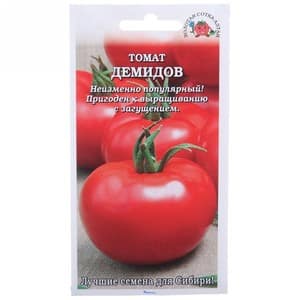
- Warming up. Dry the seeds.Place them in a cotton bag and hang it from the radiator for 2-3 weeks. Those who like to do everything quickly place the seeds on a cloth and place them on a cardboard sheet on a heating radiator. In this case, the duration of the procedure is from 36 to 48 hours. Some summer residents advise placing the seeds in a newspaper envelope, which is wrapped in cotton cloth and laid out on the radiator. This saves space and prevents seeds from being accidentally scattered.
- Disinfection. Prepare a 1% solution of potassium permanganate: add 1 g of potassium permanganate to 100 ml of water. For accurate measurements, use scales, since if the ratio is incorrect, there is a high risk of destroying the seed material. If this option does not work, try measuring the powder by eye. In this case, dissolve a teaspoon of potassium permanganate (6 g) in 2 glasses of water (600 ml). The duration of disinfection of tomato seeds is 20 minutes. The 1% solution is almost black in color, so don't be alarmed if the seeds become colored after soaking. Plant agronomy experts say that treating grains with a less concentrated solution will not have a disinfecting effect. After disinfection is completed, rinse the grains with running water.
- Bubbling (oxygen saturation). Place the planting material in warm (+26 to +30 °C) water and stir every hour for 15–18 hours. For convenience, use an aquarium compressor. If the seeds begin to germinate, interrupt the procedure.
- Soak. Place the seeds in warm water (from +26 to +30 °C) or a solution of a biostimulating drug. Experienced farmers prefer to use Zircon, Epin, sodium humate and Energen (in liquid form). The duration of the procedure is 12 hours. Summer residents also advise soaking seeds in aloe juice.To do this, wrap the leaves of the plant in paper and put them in the refrigerator for 2 weeks. Then squeeze out the juice and mix it in a 1:1 ratio with warm water. Soaking time is 24 hours.
- Hardening. Wrap the seeds in cloth and film and place on the bottom shelf of the refrigerator for 8 hours. Then place it in a room at room temperature for 8 hours. Repeat 5-6 times.
- Germination. Leave the seeds on gauze or cotton cloth in a flat bowl and moisten with warm water. The temperature of the room where the seeds will be located should not be lower than +21 °C. Make sure to keep the fabric damp at all times. If necessary, moisten it with water (+25 to +30 °C). When embryos 2-3 mm in size appear on the grains, begin planting.
Container and soil
Buy a container for seedlings in specialized stores or make one from scrap materials. Plastic cups, cut-off bottles, dairy product packaging, and PET cake lids are great for this.
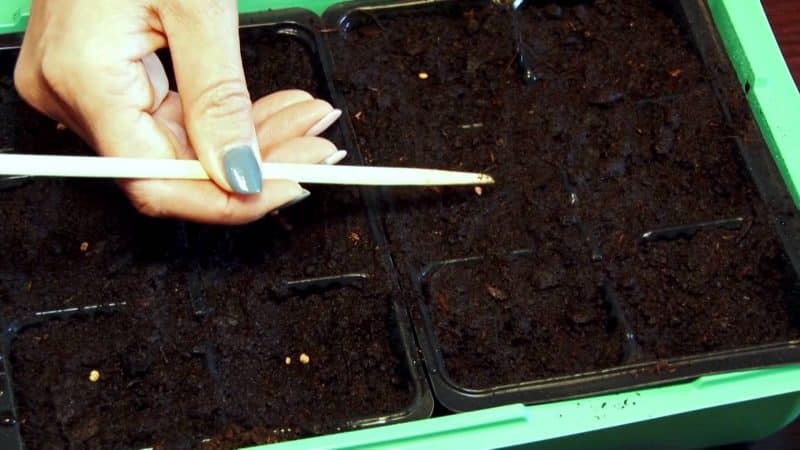
Buy soil mixture at the store. The composition of the universal tomato soil includes:
- humus;
- peat;
- river sand.
You can prepare the soil mixture yourself by combining:
- garden soil - 1 part;
- non-acidic peat - 2 parts;
- sand - 0.5 parts;
- humus or sifted mature compost - 1 part.
Add wood ash or dolomite flour, sphagnum moss and fallen pine needles.
Before planting, treat the soil and containers with boiling water or a weak solution of potassium permanganate.
Sowing
Fill the containers 2/3 full with soil. Moisten the soil generously, make grooves 1 cm deep in it. Place the seeds at a distance of 2-3 cm from each other. Cover with a thin (1-2 cm) layer of soil and moisten the soil with a spray bottle.
Cover with plastic wrap (for small containers, use thin plastic bags) to create a greenhouse effect and place the containers in a dark and warm (+22 to +28 °C) place.
Growing and care
As soon as the first green heads appear from the ground, remove the film. Water the seedlings as the soil dries under the roots using a teaspoon or syringe. When two true leaves appear, plant the tomatoes in separate containers. Add mineral fertilizers to the new soil at the rate of 1 tbsp. spoon per 5 liters of soil. Dig the seedlings down to the cotyledon leaves.
10 days after picking, feed the seedlings with complex fertilizer. Add them every 14 days. 2-3 weeks before transplanting to the garden, start hardening off the tomatoes. In the first days, take it out into the open air for 3-4 hours, placing the containers in the shade. Gradually increase the time you spend outside and the amount of sunlight. 2-3 days before transplanting, leave the seedlings outside overnight.
Important! Seedlings standing on a windowsill will lean towards the sun, so rotate the containers every day.
Carefully monitor the formation of inflorescences. It is advisable to transplant the plants to the site before the first flowers appear. Otherwise, the tomato takes a long time to take root, is delayed in development, and fruiting begins later than the date indicated by the manufacturer.
How to grow tomatoes
After 60–65 days, transplant the tomatoes to the site. Check the weather conditions in your region.
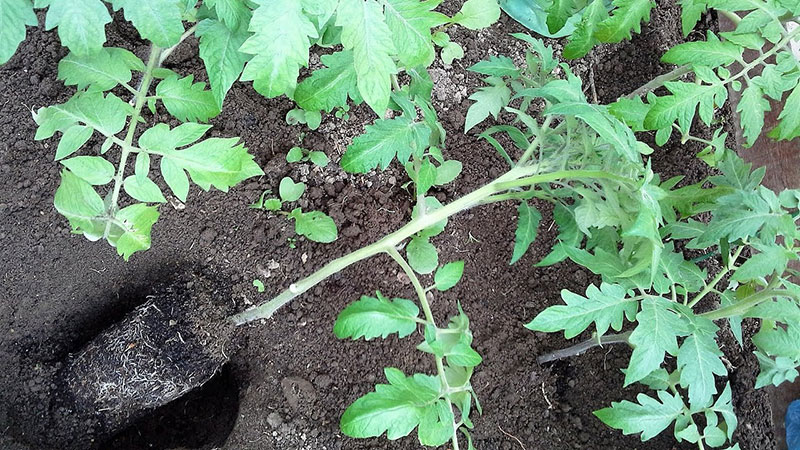
Landing
Plant Demidov tomatoes according to the 50*60 pattern (4 bushes per 1 m2). Some summer residents thicken the plantings and plant in a 40*50 pattern (6 bushes per 1 m2).
2-3 days before transplanting, water the seedlings generously.To ensure that the roots grow thicker and the plant receives more nutrients from the soil, cut off the cotyledons and a couple of lower leaves with a sharp blade.
Dig holes the size of a ball of earth and the height of the stem to the first pair of leaves, water generously with warm, settled (rain) water.
Important! Plant seedlings on cloudy days or evening hours. This promotes rapid recovery of the plant.
Use the transshipment method: remove the bush from the pot along with the earthen ball, lower it into the hole, dig it with earth up to the cotyledon leaves and compact it. Spray with water again.
Care
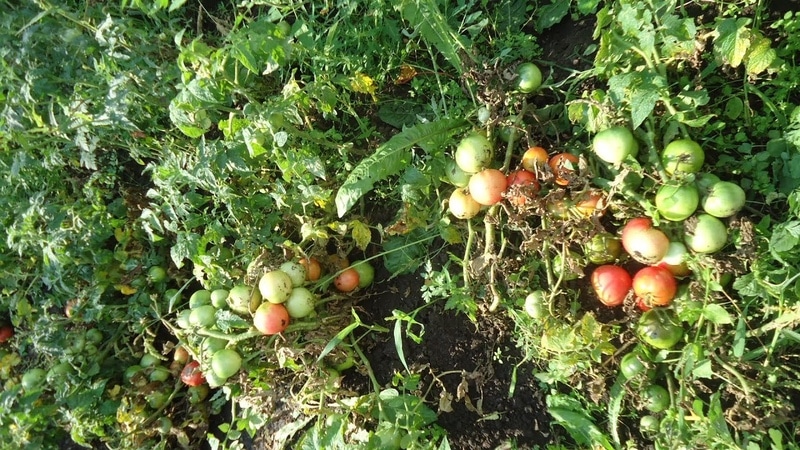
Water seedlings as the soil dries with warm water and only in the evening hours. Immediately loosen and weed the soil around the bushes. 2 weeks after transplanting, earth up the tomatoes. Repeat the procedure after 2-3 weeks.
Once every 14 days, feed vegetables with complex and mineral fertilizer.
It would not be superfluous to spray with foliar fertilizers: wood ash, boric acid solution.
Don't tie it up don't pick tomatoes. It is not necessary.
There are no difficulties in growing Demidov tomatoes. The main thing is not to allow the soil to dry out, but also not to over-moisten it, especially during the period of fruit ripening. The first will lead to the formation of blossom end rot, and the second will lead to cracking of the skin of the fruit.
Diseases and pests
Manufacturers of the variety claim that the tomato has high resistance to diseases and pests.
However, untimely watering can cause blossom end rot to form on the plant. With a lack of water and high air temperature, moisture evaporates from the leaves and stem and the plant begins to consume it from the ripening fruits. As a result, brown, dry spots form on them.
Important! Top rot also actively develops when there is a lack or excess of calcium, the plant is oversaturated with nitrogen and the increased acid content in the soil.
Therefore, the primary prevention of the disease is proper watering. If signs of the disease are detected, begin treatment immediately. Remove the affected parts of the plant and burn them. Spray the plantings with calcium nitrate (7–10 g per 10 liters of water) or potassium chloride (30 g per 10 liters of water). Of the traditional methods, the most effective is a soda solution (20 g of soda per 10 liters of warm water).
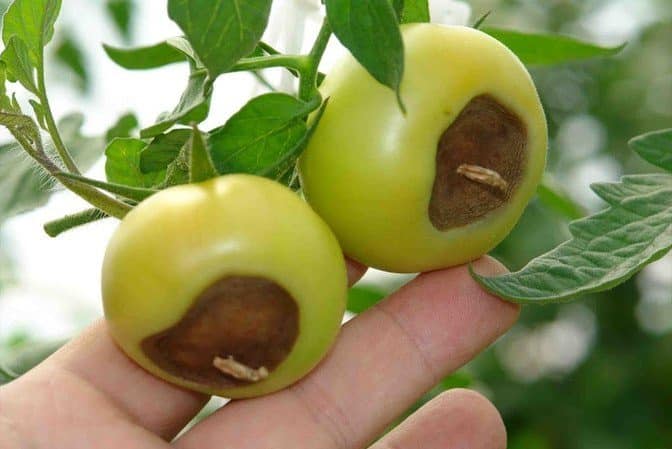
Tomatoes are susceptible to attack by various pests:
- White dots appear on the undersides of leaves from spider mite puncture sites. Later, the vegetables are enveloped in a thick web. They get rid of the pest by spraying tomatoes with alcohol or a tincture of dandelions, tobacco, garlic and horseradish roots. Special means are also suitable (for example, “Anti-mite”).
- It is difficult not to notice the Colorado potato beetle in plantings. In spring and summer, the pest migrates to tomatoes from potatoes. The drugs “Prestige”, “Iskra”, etc. are good against it. The leaves and stems are treated several times during the summer. To destroy beetle larvae, use a mixture of water, ash and laundry soap.
- In summer, plants are affected aphid. It sucks all the juices out of the tomatoes and makes them lethargic. To combat insects, solutions of karbofos or bleach are used. A mixture of ash and soap is effective.
To prevent the appearance of pests, bushes are treated with insecticides.
Growing in open ground and in a greenhouse
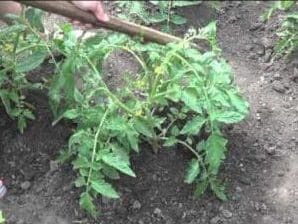
There are no differences in growing tomatoes in shelter and without it. An undeniable advantage of greenhouses is the ability to create the microclimate necessary for heat-loving vegetables. This leads to higher plant yields than in open ground.
An important nuance of growing tomatoes in a greenhouse is watering: in a shelter, tomatoes are irrigated only in the morning. In the evening, condensation may form on them, which will be a good environment for the development of fungal diseases. Remember the need to regularly ventilate greenhouses. Trim the lower foliage as soon as the fruits begin to turn red.
In open ground, water the tomatoes 2-3 hours before sunset with warm water, strictly at the root.
Harvesting and application
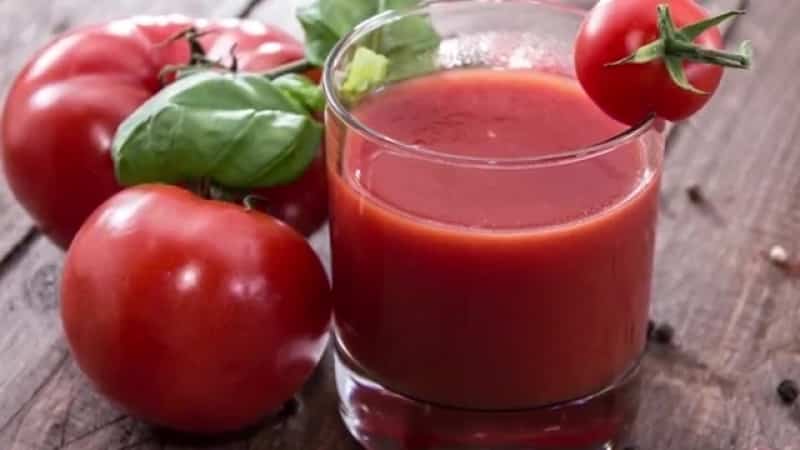
Tomatoes ripen at 101–109 days. The fruits are used fresh. They are not suitable for whole-fruit pickling. They are used to prepare lecho, sauces and juices for the winter. Demidov tomatoes tolerate transportation and long-term storage well, which is why they are often grown for sale by large farms.
Interesting! You can collect seeds from tomatoes for further planting.
Advantages and disadvantages of the variety
The undoubted advantage of Demidov tomatoes is their unpretentiousness. In addition, tomatoes are loved by Russian summer residents for:
- resistance to cold and temperature changes;
- immunity to diseases and pests;
- productivity;
- taste.
The variety has no significant disadvantages. Some people call susceptibility to blossom end rot and fruit cracking a disadvantage. However, these problems can be avoided by following simple agricultural practices.
Farmer reviews
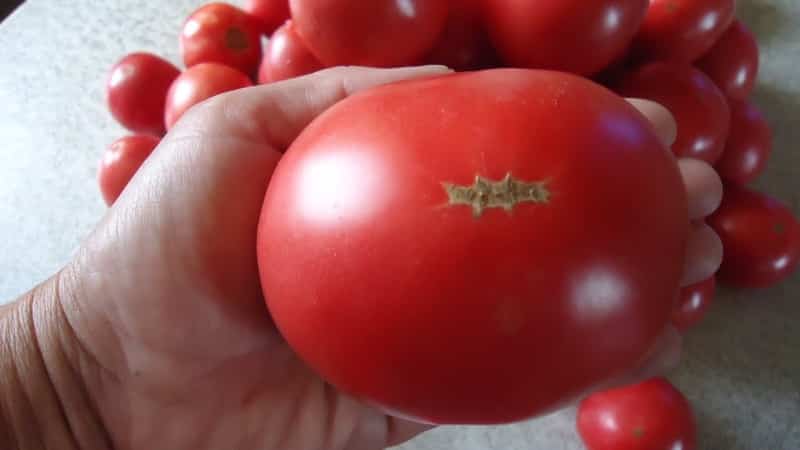
Experienced gardeners note the taste, productivity and unpretentiousness of the variety.
Maria Pskovina, Velikiye Luki: “I grew Demidova before, it’s very decent. Powerful low bush, pink fruits of good taste, average yield. I don’t remember any illnesses, but I didn’t seem to suffer much.I remember that I was disappointed in the canning - the tomatoes were cracked, but if you don’t pickle them whole, it’s quite acceptable. A worthy variety, plant for good health!”
Victor Semenov, Kulikovka village: “I am an experienced summer resident. Previously, I grew varieties with tall bushes. I constantly had to think about gartering the bushes. A neighbor recommended the Demidov variety. It's just earth and sky. And there were so many tomatoes that I treated all my relatives and friends.”
Alexander Dorin, Novosibirsk: “I’ve been dealing with tomatoes for several years now. I plant the Demidov variety in open ground. Foliar feeding helps a lot - the fruits are all the same. They look attractive. Good variety."
Dmitry Olegov, Pskov: “Demidov has been growing in our garden for many years. Moreover, we are not covering him with anything. These tomatoes are very resistant and hardy, and are not afraid of temperature changes. The taste is simply great. I have never tasted anything better in my life. I recommend this variety to all my friends.”
Conclusion
Demidov tomatoes are a godsend for lazy and inexperienced summer residents, as well as residents of cold regions of the country. Low bushes do not need shaping, pinching or staking. With timely watering and fertilization, the bushes will delight you with a high (up to 9 kg per 1 m2) harvest of delicious pink fruits.
Fresh salads are prepared from tomatoes, snacks, juices and sauces are prepared for the winter. Demidov is the choice of many agricultural firms. Due to their high shelf life and ability to withstand transportation well, tomatoes are grown for sale.
